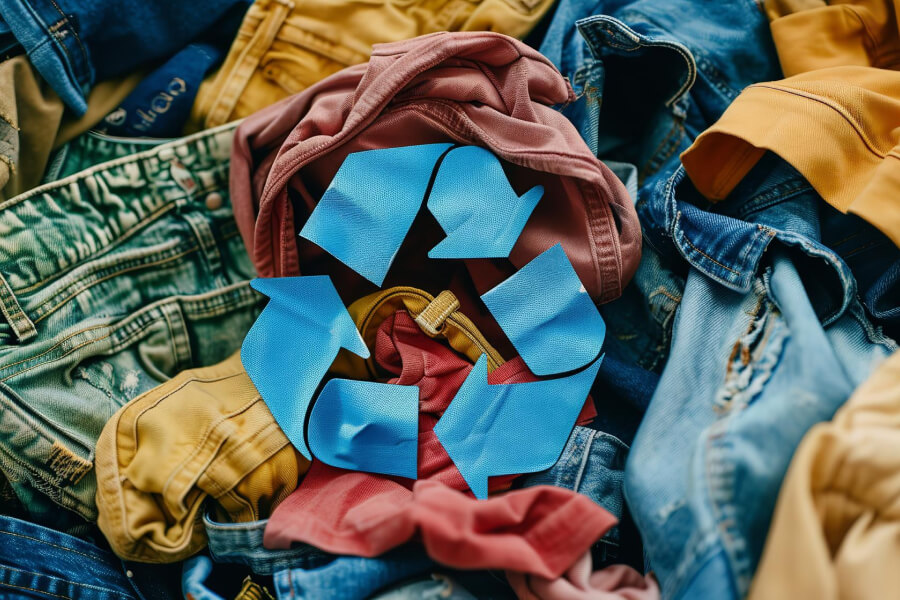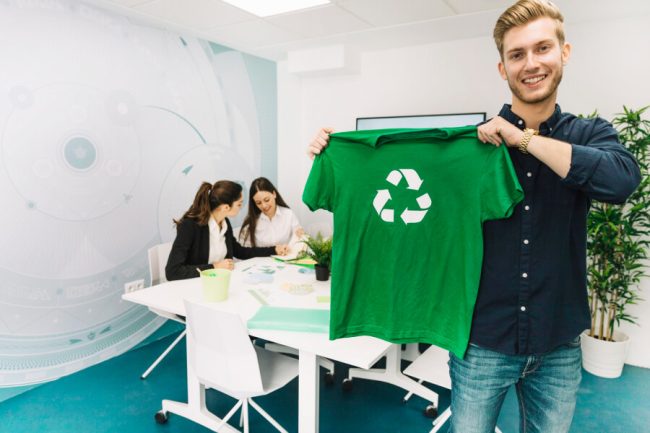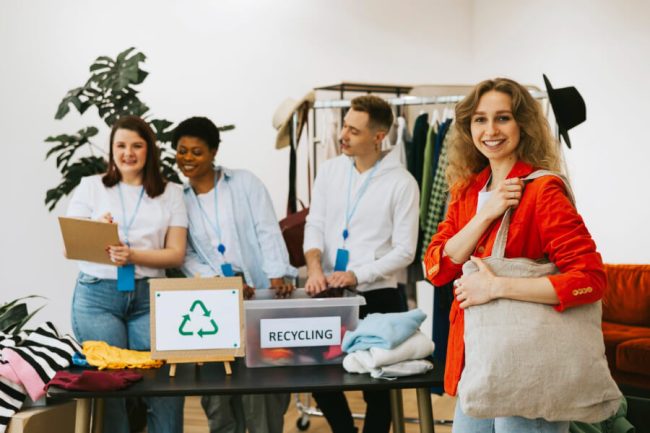Unlock the secrets of clothing recycling! Join the circular fashion trend with practical advice and resources to create a more sustainable wardrobe.
The rise of the circular fashion movement is not just a trend; it’s a necessary shift toward a more sustainable future.
By understanding how to engage in clothing recycling, you can actively participate in reducing waste and promoting eco-friendly practices.
Circular Fashion and Sustainability
Circular fashion is an innovative approach to designing, producing, and consuming clothing that prioritizes sustainability.
Unlike the traditional linear model where clothes are made, used, and discarded circular fashion focuses on extending the life cycle of clothes through clothing recycling, upcycling, and responsible consumption.
This system aims to keep materials in use for as long as possible, minimizing waste and environmental impact.
Why Circular Fashion Matters
As consumers, our choices significantly impact the environment. The fashion industry is one of the largest contributors to pollution and waste.
Embracing circular fashion, particularly through clothing recycling, allows us to challenge this system by promoting sustainable practices and encouraging a shift toward mindful consumption.
It’s not just about what we wear; it’s about how we approach our wardrobes.
Current Environmental Impact of the Fashion Industry
Fast Fashion and Its Consequences
The fast fashion industry has revolutionized how we shop, making trendy clothing accessible and affordable. However, this comes at a significant cost.
The production of cheap, disposable clothing contributes to a huge amount of waste an estimated 92 million tons annually.
Also, the manufacturing process often involves toxic chemicals, excessive water usage, and significant greenhouse gas emissions. Clothing recycling can help combat these issues by reducing the number of clothes that end up in the trash.
The Need for Sustainable Practices
As awareness of these issues grows, so does the need for sustainable practices in the fashion industry. By adopting circular fashion principles, especially through clothing recycling, we can mitigate the negative impact of our clothing consumption and help create a healthier planet.
Benefits of Clothing Recycling
Environmental Impact Reduction
One of the primary benefits of clothing recycling is the reduction of environmental impact. Recycling garments helps to divert waste from landfills, conserve resources, and decrease pollution. For example, recycling just one ton of textiles can save approximately 20,000 gallons of water an incredible feat when considering the resources required to produce new clothing.
Economic Benefits of Recycling
In addition to environmental benefits, clothing recycling can lead to economic advantages.
By participating in the circular fashion trend, you can save money by selling or donating your gently used items instead of discarding them.
This not only extends the life of the clothing but also helps to create a market for second-hand goods, promoting a more sustainable economy.
How to Add Clothing Recycling in Your Wardrobe
Donate or Sell Your Gently Used Clothing
One of the easiest ways to engage in clothing recycling is by donating or selling your gently used clothing.
Many organizations, such as Oxfam and the Red Cross, accept donations and redistribute them to those in need.
If you prefer a more profitable option, consider selling your items through online marketplaces like Wallapop or Vinted, which are popular in Spain.
Participate in Clothing Swaps
Clothing swaps are a fun and social way to refresh your wardrobe while reducing waste.
Gather friends or family for a swap party, where everyone brings items they no longer wear and exchanges them for something new.
This not only promotes sustainable fashion but also strengthens community bonds, all while emphasizing the importance of clothing recycling.
Upcycling and DIY Projects
Get creative with your wardrobe by exploring upcycling and DIY projects! Transform old clothes into new treasures, whether it’s turning an oversized shirt into a trendy tote bag or repurposing denim into home decor.
There are countless tutorials online that can inspire your next project. Not only does this keep clothes out of landfills, but it also adds a personal touch to your wardrobe through clothing recycling.
The Future of Circular Fashion
Innovations in Recycling Technologies
The future of circular fashion is bright, thanks to ongoing innovations in recycling technologies. Companies are developing new methods for clothing recycling, making it easier and more efficient to turn old garments into new materials.
Brands like Renewcell are pioneering processes to recycle cotton and other fibers, creating new fabrics that can be used in new collections.
Collaborations Between Fashion Brands and Recycling Programs
In recent years, many fashion brands have recognized the importance of sustainability and are partnering with recycling programs to promote clothing recycling practices.
By collaborating with organizations that specialize in textile recycling, brands can ensure their products are disposed of responsibly, closing the loop on their supply chains.
Joining the Circular Fashion Movement
How Consumers Can Advocate for Change
As consumers, we hold the power to drive change in the fashion industry. By actively choosing to engage in clothing recycling and supporting sustainable brands, we can send a clear message that circular fashion is essential. Share your journey on social media, engage in conversations about sustainability, and encourage friends and family to join the movement.
Supporting Sustainable Fashion Brands
Look for brands that prioritize sustainability in their practices. Whether they use eco-friendly materials, implement ethical labor practices, or support clothing recycling initiatives, these brands are leading the way toward a more circular fashion system. By supporting them, you contribute to the demand for responsible fashion choices.
Conclusion
Embracing circular fashion isn’t just a trend; it’s a lifestyle choice that can positively impact the environment and our communities. By recycling clothing and making conscious choices, we can all contribute to a more sustainable future. Let’s start making changes today! Together, we can join the circular fashion trend through clothing recycling and inspire others to do the same.
FAQs
How do you promote circular fashion?
Promoting circular fashion involves raising awareness about sustainable practices, supporting eco-friendly brands, and engaging in clothing recycling initiatives.
How does recycling help the fashion industry?
Recycling helps the fashion industry by reducing waste, conserving resources, and encouraging the use of sustainable materials, ultimately leading to a more responsible production system.
What are the 4 R’s of circular fashion?
The four R’s of circular fashion are Reduce, Reuse, Recycle, and Rethink. These principles guide consumers in making sustainable choices, particularly through clothing recycling.
How can the fashion cycle become circular?
The fashion cycle can become circular through initiatives like clothing recycling, sustainable production practices, and encouraging consumers to engage in mindful consumption.







